Château Vary
Château de Nages
Vieilles Vignes Costières-de-Nîmes Red Rhone Blend
I’ve been buying this wine for years, but somehow never rated it. Very nice, does vary by vintage. — 6 years ago
Hamilton Russell Vineyards
Ashbourne Sandstone Walker Bay Chardonnay Blend 2018
Our second stop in Hemel-en-Aarde (an hour SE of Stellenbosch) was Hamilton Russell; which also makes this Ashbourne line of wines. This is the wine Anthony Hamilton Russell greeted us with when we arrived.
I didn’t takes notes on this visit. It just never seemed appropriate during visit. Anthony was a treasure trove of wine knowledge, not only on his Terroir but, South Africa in general.
I would say this blend of; Chardonnay, Sauvignon Blanc and Semillon was quite good. The fruit sees the warmth during the day but cools down in the evening as it’s not far from the coast. It’s fermented in all neutral wood and has a gentle 13% ABV. All of which, are right in my wheelhouse in terms of how I prefer my whites.
This was our last visit in South Africa and probably our overall favorite. It was a combination of the area, their wines, Anthony’s passion & knowledge of his Terroir and the amazing lunch they prepared for our at their house. It was hands down the best meal we had on our trip.
Photos of; Hamilton Russell Vineyard, one of the soil structures that vary site to site around their Estate and a long shot of the property with Anthony & Olives house up on the hill.
— 7 years ago
Château Calon-Ségur
Saint-Estèphe Red Bordeaux Blend 1996
On the nose, a touch of barnyard. Sweet & sour dark cherries, blackberries, black raspberries, baked strawberries and hues of blue fruits. Dry crushed rocks, dry stones, rich black turned, soft leather, cedar, underbrush, tobacco, light vanilla & clove, medium spice, limestone, fresh & withering dark red floral bouquet.
The body is just full. The tannins are soft, rounded, chewy & sticky and still have some teeth. The wine elegantly guides smooth over the palate...very little that pushes back. It’s still youthful but not as youthful as my expectation. Sweet & sour dark cherries, blackberries, black raspberries, baked strawberries and hues of blue fruits. Dry crushed rocks, dry stones, rich black turned, soft leather, cedar, underbrush, tobacco, some dry herbal notes, sweet tarry notes, light vanilla & clove, medium spice, powdery limestone, loamy clay & top soil, graphite, dark spice with lifting heat, fresh & withering dark red floral bouquet and haunting violets. The acidity is near perfect. The structure, tension, length are in a very place but, will still improve for another 15+ years. The long, finish is ripe, round, balanced and lasts minutes.
Photos of, the Chateau, Technical Director Vincent Millet, beautiful stainless steel tank room and their new barrel room.
Producer notes & history...historic records show that Calon Segur was in existence as far back as 1147, when it was owned by Monseigneur de Calon. He was an important Bishop in the community. This makes Chateau Calon Segur one of the very oldest properties in Saint Estephe. Eventually, the property came to be owned by Nicolas Alexandre de Segur. Hence where part of the name of the Chateau comes.
After passing through generations, the estate became the property of the famous Marquis de Segur. de Segur is an important figure in Bordeaux history, not only for his ownership of numerous top Bordeaux estates in that day but, he also owned Lafite and Latour. de Segur is credited with uttering the words that spawned the idea behind the heart shaped logo of Calon Segur. The story is that de Segur is quoted as saying: “I make my wine at Lafite and Latour, but my heart is in Calon.” This famous saying lives on the label of Chateau Calon Segur, where the drawing of a heart is prominently featured on the bottle.
Chateau Calon Segur was one of the original three Bordeaux vineyards in Saint Estephe. In 1825 Chateau Montrose was a forest without a single vine belonging to the massive Calon Segur estate. In fact, Chateau Phelan Segur was also once part of the vast Segur estate. The holdings of the Segur family were so large, they included what would later became Chateau Lafite Rothschild, Chateau Latour and Chateau Mouton Rothschild!
The more modern era by European standards began in 1894 when its Left Bank vineyards were purchased by Georges Gasqueton and Charles Hanappier. Hanappier was a large negociant at the time. The Gasqueton family managed the estate until 2012. Madame Gasqueton ran the estate until she passed away at the age of 87 in late September, 2011.
In July of 2012, Chateau Calon Segur was sold for 170 million Euros or 215 million US dollars. The buyer was a French Insurance Company, Suravenir Insurance. Jean-Pierre Moueix, the owner of Petrus and the massive negociant company Duclot also took a minority stake in Chateau Calon Segur.
Since taking over Calon Segur, they started renovating the property with the focus on the wine making facilities. They followed a trend to vinify on a parcel by parcel basis. The estate replaced their older vats with new stainless steel tanks that vary in size and number to match the size of the various vineyard parcels.
The new tanks accompany a completely new vat room as well with everything moving completely by gravity. The new tasting room was remodeled as well. The renovations were completed in 2016.
Their cellars also needed work. Immediately after closing, the new owners began an extensive replanting of the Calon Segur vineyard. There were a number of reasons they chose to do this. They needed to increase the level of vine density and add more Cabernet Sauvignon.
The extensive renovation of Chateau Calon Segur cost somewhere north of 20 Million Euros. Other changes, the new owners took full control and brought in Vincent Millet as the Technical Director.
The 55 hectares of Calon Segur are located just north of the small town of St. Estephe and are planted to 53% Cabernet Sauvignon, 38% Merlot, 7% Cabernet Franc and 2% Petit Verdot.
Chateau Calon Segur is one of the few walled in vineyards in the Left Bank. Calon Segur is also known as being the northern most Classified Growth in Medoc.
The terroir of Calon Segur is a blend of gravel, rocks, clay, sand and limestone soils on the surface with gravel that can be as deep as 5 meters. Underneath, you find marl, clay and limestone.
On average, the vines are 25 years of age. However, they have older vines that range in age from 45-60 years of age.
The vineyard of Chateau Calon Segur remains almost exactly the same as it did at the time of the 1855 Classification.
Since the remodel was completed, fermentation takes place in 70 conical shaped, stainless steel tanks that range in size from 25 hectoliters to 120 hectoliters. Vintages are now aged in 90% to 100% new, French oak barrels for up to 20 months.
Production of Chateau Calon Segur is around 20,000 cases per year. They also make a second wine, which was originally named Marquis de Calon. Now, the second wine is sold under the name of Le Marquis de Calon Segur.
There is also a third wine, which is sold under two names, La Chapelle de Calon, and St. Estephe de Calon Segur, which is produced from vines that mostly come from a specific plot with more limestone. — 8 years ago
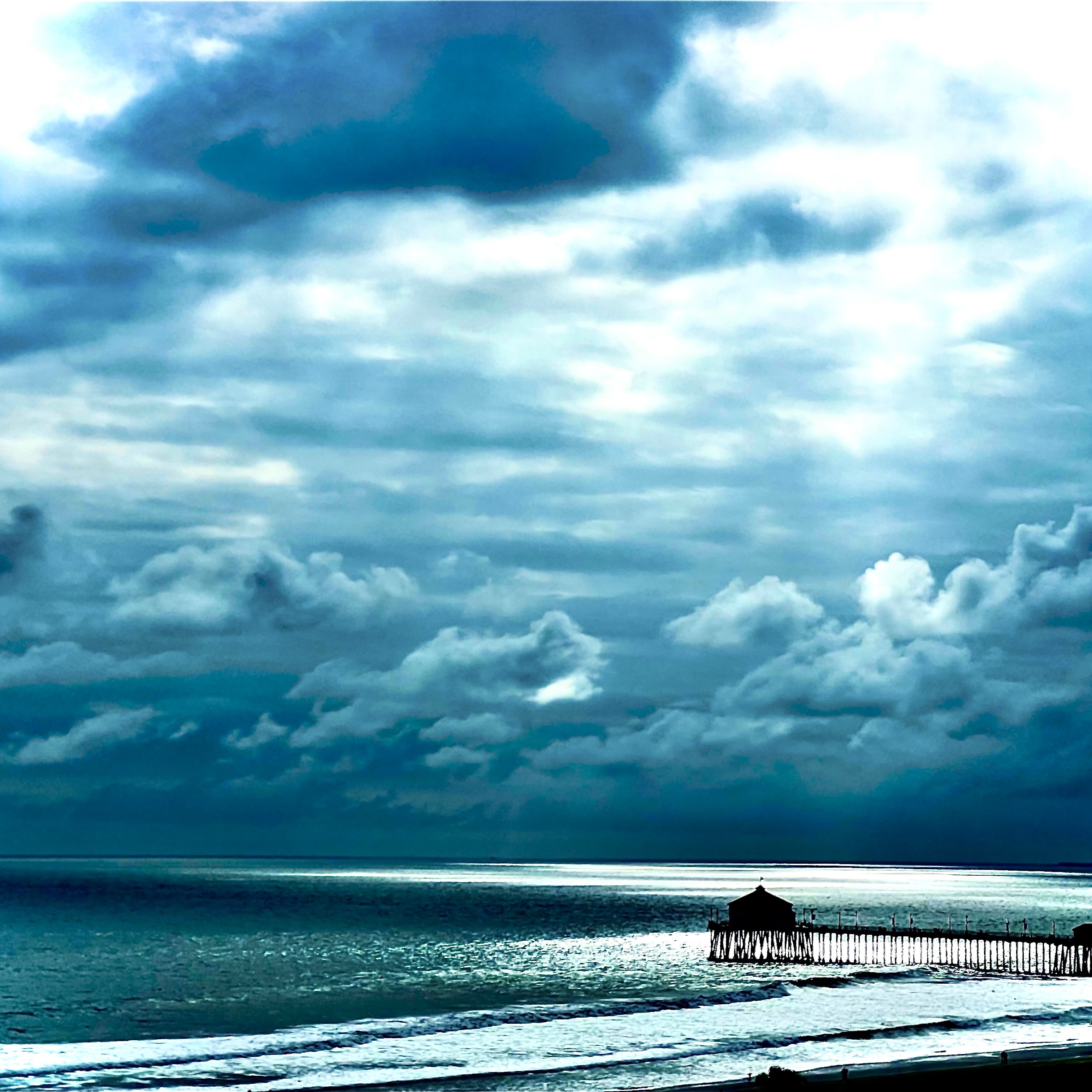
Penfolds
Bin 389 South Australia Cabernet Shiraz 1992
Nose of spiced plum & blueberries, perfumed flowers and baking spices. Bin 389 is often referred to as ‘Poor Man’s Grange’ or ‘Baby Grange. The Bin 389 is aged 18 months in American oak hogsheads (300 litres). There is 20–30% new, 70–80% 1- and 2-year-old oak, including barrels used for the previous vintage of Grange and Bin 707. The proportion of Cabernet Sauvignon can vary between 60 and 75 per cent depending on vintage conditions. The 92 is still holding it's own. It tastes as if it's just the other side of it's peak by 2-3 years. Still very pleasurable. The fruits show lots of black plum, plum, blueberries, olallieberries, wild blackberries, black cherry licorice, black tea, spice-box, used leather, dry stems, dry roses and fresh violets, vanilla, cinnamon, light caramel & brown sugar, gravelly dry brown earth, irony minerals and nice acidity. 13.5% alcohol but it feels higher in the back of the throat. The body is slightly lean for the grapes but that's the bottle age. The long finish is bright, elegant fruit with a touch of woodiness. A good warm up to my to Barossa Valley, Eden Valley, McLaren, Clare, Langhorne, Coonawarra, Hawke's Bay and Central Otago trip. — 9 years ago
Hudson
Estate Grown Napa Valley Chardonnay 2016
I can’t believe I haven’t posted this, especially since I’ve gone through who knows how many this year. For me, Hudson chardonnay fruit is very distinctive aromatically, as I pick up clove and juicy fruit gum notes. Added notes of vanillin, Anjou pears and a touch of marzipan. Certainly rich in style and unmistakably Cali but lots of deep flavor and complexity. Honeyed Passion fruit, sea salted popcorn, and almond pastry on the palate. Good acidity as well. I’ve also found Hudson chardonnay fruit to be best enjoyed on the young side, but that may vary by producer. A consistently delicious chardonnay. — 6 years ago

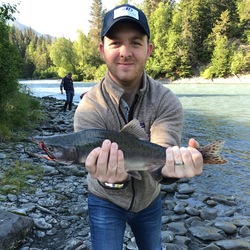
@Ryan Vento : Hudson Vineyards has been around a while. Lee Hudson has some of the best chardonnay fruit in Cali, that’s why you’ll see so many high end labels getting fruit from him (Aubert, Kistler, etc). I’ve heard that after all the other labels have been getting massive scores, he starting to hold back more of his fruit to keep for his personal label. Don’t ever hesitate to scoop up the chardonnay if you see it!

Poggio Anima
Belial Toscana Sangiovese 2016
Sangiovese can vary widely. This is a perfect marriage of smooth, sweet, and dry, and easy to take. I love Poggio Anima and this is just another star in their line 😍 #poggioanima #sangiovese #italia 🇮🇹🇮🇹🇮🇹🇮🇹 #tivogliobene — 7 years ago
Château Brane-Cantenac
Grand Cru Classé en 1855 Margaux Red Bordeaux Blend 2005
I have a six-pack of this 05. I thought after 10 years in bottle, it would be interesting to check in on its evolution. While tasty, I’ll wait another 8-10 to open another. Even after 2-3 hours in the decanter, it’s still a very young adolescent. On the nose, slightly sour blackberries & dark cherries, dark currants, baked black plum, haunting blue fruits, anise, whiff of spice, steeped tea, dry stones, dry crushed rocks with dry top soil, caramel, vanilla with fresh & dry red florals. The body is thick & full. Tannins are starting to round out. It’s velvety on the palate. The fruits are; bright, fresh & ripe and really show the greatness of the 05 vintage. Dark currants, blackberries, dark cherries, baked black plum, haunting blue fruits, baked strawberries, cherries, raspberries on the long set, dark spice, clay & loamy dry top soil with crushed rocks, dry stones, cigar with ash, graphite, dry stems, slight herbaceous character, mint, used leather, clove, caramel, vanilla, fresh & dry red florals with violets. The round acidity is about perfect. The structure and length are still strong. The balance is in harmony. As for the long finish, it’s lush, ruby, rich and well polished. Photos of; Chateau Brane Cantenac, large wood vats, Henri Lurton and Estate vines. Producer notes and history...Chateau Brane Cantenac began in the early 17th century. At the time, the estate was known as Domaine Guilhem Hosten. Even that far back, wine was produced from the property. In fact, the wine was so highly regarded it was one of the more expensive wines in Bordeaux. It sold for almost as much money as Brane Mouton. This is interesting because of who went on to buy the vineyard in the 1800’s. The Baron of Brane, also known as “Napoleon of the Vineyards”, purchased the Chateau in 1833. At the time of the sale, the estate was called Chateau Gorce-Guy. To get the funds needed to purchase the Margaux vineyard, the Baron sold what is now called Mouton Rothschild, which was at the time of the sale, known as Chateau Brane-Mouton. Not such a good move with hundreds of years in hindsight! In 1838, the Baron renamed property taking his name and the name of the sector where the vineyards were located and called it Chateau Brane Cantenac. The Chateau later passed to the Roy family, who were well-known in the Margaux appellation in those days, as they owned Chateau d’issan. Moving ahead to 1920, the Societe des Grands Crus de France, a group of merchants and growers that owned several chateaux located in the Medoc including; Chateau Margaux, Chateau Giscours, and Chateau Lagrange in St. Julien, purchased Chateau Brane Cantenac. Five years later, M. Recapet and his son-in-law, François Lurton, took over Brane Cantenac along with Chateau Margaux. Lucien Lurton (the son of François Lurton) inherited Brane Cantenac in 1956. Today, the estate is still in the hands of the Lurton family. Brane Cantenac is owned and run by Henri Lurton. After being given the responsibility of managing Brane Cantenac, it was under the direction of Henri Lurton that large portions of the vineyard were replanted. Vine densities were increased, the drainage systems were improved and the plantings were also, slowly changed. The vineyard of Brane Cantenac is planted to 55% Cabernet Sauvignon, 40% Merlot, 4.5% Cabernet Franc and .5% Carmenere. Carmenere was used for the first time in the 2011 vintage. The only other Chateau I know that still uses Carmenere is Clerc Milon. The 75 hectare Left Bank vineyard of Brane Cantenac is essentially unchanged since it earned Second Growth status in the 1855 Classification. At least that is the case with the 45 hectares used to produce the Grand Vin of Brane Cantenac. Those 45 hectares are planted surrounding the Chateau. Those vines are located just in front of the Cantenac plateau and are the best terroir that Brane Cantenac owns. They have other parcels, which are further inland and much of those grapes are placed into their second wine, Le Baron de Brane. Those additional hectares can be divided into 3 main sections. Behind the Chateau, they have 15 hectares of vines on gravel and sand, 10 hectares across the road with sand, gravel and iron and a 13 hectare parcel with gravel called Notton, which is used for their second wine. The vineyard is planted to a vine density that ranges from 6,666 vines per hectare on the plateau and up to 8,000 vines per hectare for the vines located behind chateau, in their sandier soils. The higher levels of vine density are always found in the newer plantings. The terroir of Brane Cantenac consists of deep gravel, sand and clay soil. Experiments in the vineyards are currently looking at becoming more organic in their vineyard management. Today, more than 25% of Brane Cantenac is farmed using organic farming techniques. It is expected that over time, the amount of hectares farmed with organic methods will be increased. Brane Cantenac has gone through 2 relatively recent modernization’s in 1999, when they added began adding the first of their smaller vats to allow for parcel by parcel vinification and then again in 2015 when they completed a much more complete renovation of their cellars and vat rooms. While Brane Cantenac is a traditional producer, they are no stranger to technology as they were one of the first estates to embrace optical grape sorting machines. In very wet vintages, they can also use reverse osmosis. To produce the wine of Chateau Brane Cantenac, the wine is vinified in a combination of temperature controlled, traditional, 22 oak vats, 18 concrete tanks and 20 stainless steel vats that vary in size from 40 hectoliters all the way up to 200 hectoliters, which allows for parcel by parcel vinification. 40% of the fermentation takes place in the oak vats. The oldest vines are vinified in vats that are selected to allow for separate parcel by parcel vinification. The younger vines are vinified more often together in the same vats. However, the Carmenere is entirely micro-vinified, meaning that those grapes were completely vinified in barrel, using micro-vinification techniques. This can also happen because the amount of grapes produced is so small. Some vats can be co-inoculated, meaning they go through alcoholic fermentation and malolactic fermentation simultaneously. At Chateau Brane Cantenac, malolactic fermentation takes place in a combination of French oak tanks and barrels. The wine of Brane Cantenac is aged in an average of 60% new, French oak barrels for 18 months before bottling. The initial 2 months of aging is done with the wine on its lees, which adds more depth to the wine. There second wine is Le Baron de Brane. Le Baron de Brane is not new. In fact, previously, the second wine went under the name of Chateau Notton, which took its name from one of the main parcels where the grapes were planted. During the late 1950’s and into the 1960’s, having a second wine was important as the estate declassified 3 vintages, due to extremely poor, weather conditions in 1956, 1960 and 1963. Production of Chateau Brane Cantenac is about 11,000 cases per year. — 8 years ago

Caymus Vineyards
Special Selection Napa Valley Cabernet Sauvignon 2005
Caymus is Caymus and will have plenty of fans - I'm not one of them since the mid 90's.
Having smelt Mega Purple (a grape concentrate allowed in winemaking) before this gives me associations of a strongly manipulated wine.
At the price point this is a definite no-go for me.
Your miles may vary... — 9 years ago

Jean-Paul & Benoît Droin
Blanchot Chablis Grand Cru Chardonnay 2014
@Delectable this is 2014 Jean-Paul & Benoît Droin, “Blanchot”
The nose reveals; candle wax, lemons, green apple, overripe pineapple, kiwi, lime pulp, pear, white peach, apricots, peach, topical melons, beeswax, honeysuckle, vanillin, creamy butter, fresh herbs, caramel, subtle chalkiness, sea fossils, limestone, grey volcanics, the lemon in Lemon Pledge, green grass, dry straw, glazed, brown butter, with fruit blossoms, yellow lilies, jasmine & spring flowers.
The palate is; rich, lush, round, waxy and elegantly smooth. Excellent viscosity. Glorious as it slips over the beautiful mouthfeel. Sour lemons, green apple, overripe pineapple, kiwi, lime pulp & candy, pear, white peach, apricots, peach, guava, topical melons, beeswax, candle wax, honeysuckle, vanillin, creamy butter, fresh herbs, caramel, subtle chalkiness, sea fossils, saline, limestone, grey volcanics, the lemon in Lemon Pledge, green grass, dry straw, glazed, brown butter with fruit blossoms, yellow lilies, jasmine & spring flowers. The acidity is; round, phat & lively. The finish is; polish, rich, lush, balance fruit & earth and has no hiccups. Great wire to wire.
Photos of; one of their Vineyards, Benoît Droin tasting through his wines & Domaine Jean-Paul & Benoît Droin,
Producer notes; The Droins have been producing wines in Chablis for nearly 400 years (their history as vignerons goes back at least to 1620). Benoît is the 14th generation guardian.
The Domaine has 13 hectares of vineyards and produces 14 different wines, including Petit Chablis, Chablis, 7 Premiers Crus and 5 Grand Crus. They prune specific to each vineyard. The wines are fermented differently by vineyard.
All their wines are fermented in mature oak. The Blanchots are all fermented and matured in tank. Vaillons, Mont de Milieu and Montée de Tonnerre receive 25 per cent of barrel fermentation and maturation, 35 per cent for Vosgros and Vaudésir, 40 per cent for Montmains and Valmur, peaking at 50 per cent for Fourchaume, Grenouilles and Les Clos. However the age of the oak and the choice of tonnelier may vary according to the cuvée. The maximum new oak is ten per cent in the Grand Crus. — 6 years ago
Ochota Barrels
The Slint Vineyard Chardonnay
Rarely do I offer ratings of white wines. While I understand individual flavor preferences vary, the unique Ochota Barrels profile demands my recommendation. It’s simply delicious, worthy of a special search of the market. Nothing same old, same old here. Get some! — 6 years ago
Marcassin
Hudson Vineyard E Block Chardonnay
This is as good as aged Chardonnay gets for my palate (your mileage may vary). Color was holding with a faint touch of green. Buttered popcorn on the nose. Great luxurious finish. Parker tasted this wine in 1998 and gave it 92 points. I’m going to have to respectfully suggest that score should be revised. Aging these wines (especially Hudson Vineyard) is like betting on an inside straight. the wines are great young and it would seem the risk is unjustified especially when you’ve had some disappointing examples where time has not been kind. So you usually lose, but when you win (like this wine did today) it is beyond memorable. Thanks very much Dan Fitzgerald — 7 years ago
Tenuta San Guido
Guidalberto Toscana Cabernet Sauvignon Merlot 2015
60% Cabernet Sauvignon 40% Merlot
Vintage elevage can vary, but is mostly 6-8 year old French oak barrels, with a small percentage of new French oak. The team at Sasaacaia do not look at Guidalberto as a second wine, specific plots are destined for this wine from the 10-24 year old Cabernet Sauvignon vines. Merlot does not even make it into #Sassicaia. The nose is serious, with pronounced complexity and density, focused and showing varietal nuances. Excellent grip and structure, fleshier fruit notes turn darker with deeper cherry, red raspberry and cassis fruit, sweet blue and violet floral notes. A sweet core of ripe and velvety tannin, while juicy acidity amps up the the fruit presence, while adding freshness and spine. This is a smart buy almost every vintage and 2015 is no exception. — 8 years ago
Abreu Vineyards
Rothwell Hyde Cabernet Sauvignon 2012
I looked at my last posting of this (from 4/2016) and stand by my notes.
I absolutely LOVE the various Single Vineyard Abreu's which to my palate are some of the most awesome wines coming out of Napa but I just don't see a resemblance to this 2nd label?
At $125 (if I remember correct) on the Mailing List I'll rather enjoy the $375/425 spent on the real thing.
I used to think this was a "super second" but at this point Blankiet's Prince of Hearts or Bryant DB-4 takes the prize for me.
....just my $0.02
Your miles may vary. — 9 years ago
Wm. Harrison Vineyards & Winery (William Harrison)
Napa Valley Cabernet Franc 2013
Love this producer. What a great family owned Winery that sticks to the basics of making damn good wine! Is this the best Cabernet Franc I've ever had from Napa? Well, that depends. I do know that they are just about the most consistent Cabernet Franc producer I have had from Napa. To me this variety can vary from year to year quite significantly, and sometimes the variation between producers makes you wonder if there is any hanky-panky going on. Not with them and Cabernet Franc. They understand these grapes, and it shows. A big wine, but not so fruit forward or jammy. Lots of floral here, but then the wine from that point onward is darker for sure. Chocolate, licorice, black cherry. This wine makes you think about everything that is here, and you get a little something different every time. Finishes dark, and right now also very tannic. This one has quite a bit of life left ahead. — 9 years ago
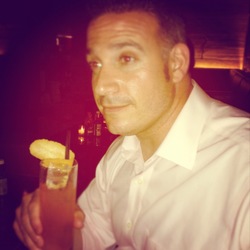



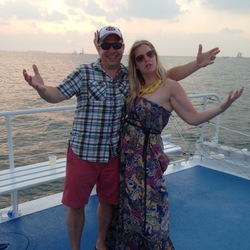





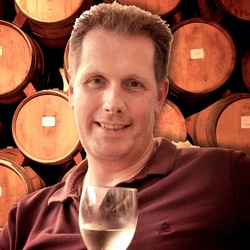
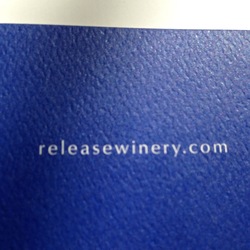

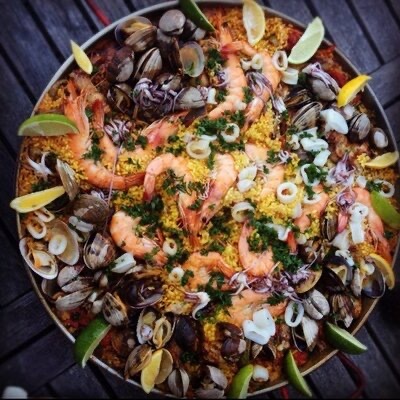


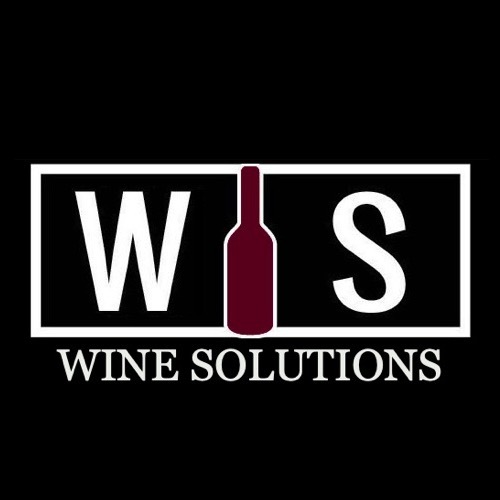
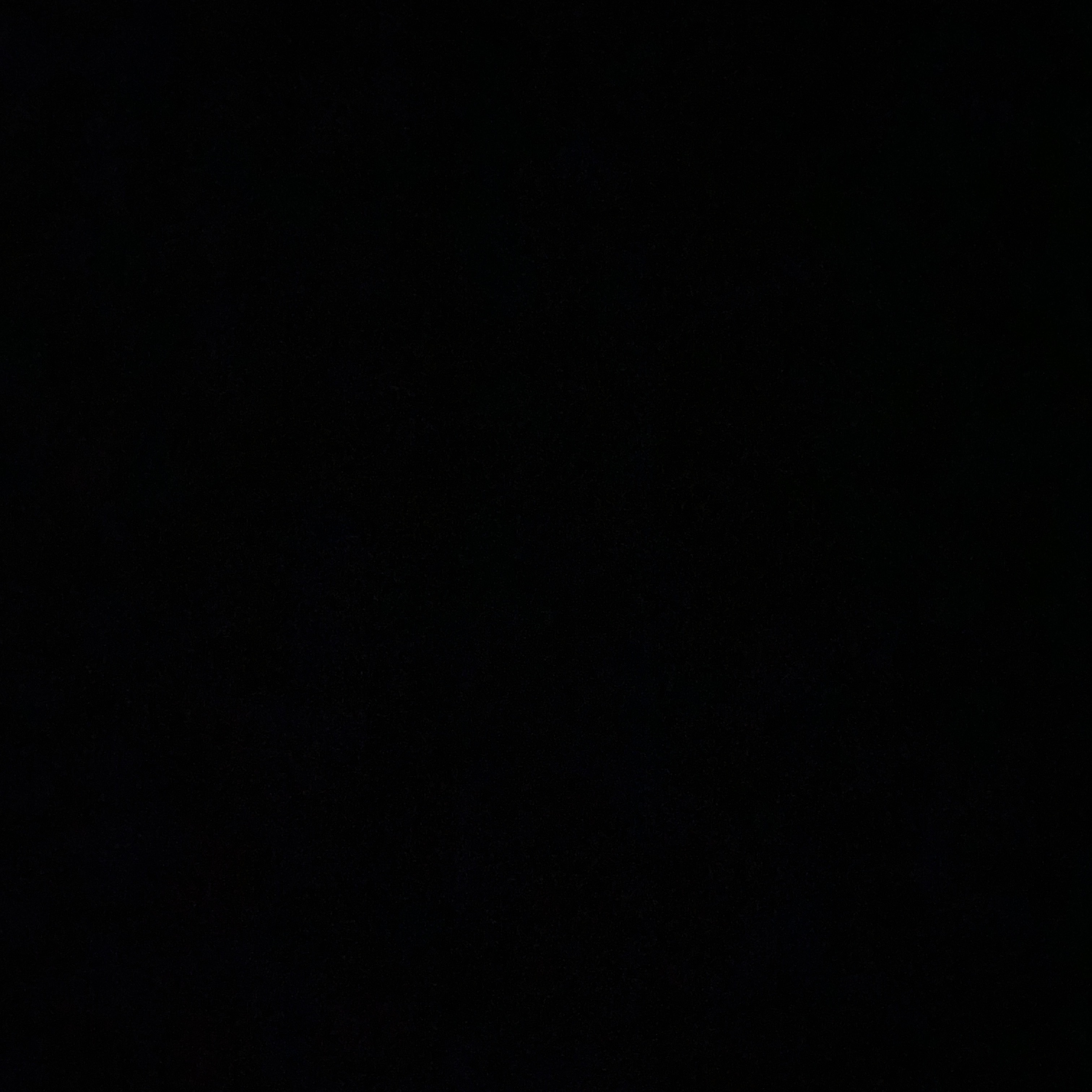
Chris Erkel
Vary consistent medium to full body Cab — 5 years ago